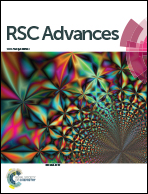Conductive silver inks and their applications in printed and flexible electronics
Abstract
Conductive inks have been widely investigated in recent years due to their popularity in printed electronics (PE) and flexible electronics (FE). They comprise specific and unique applications that belong to a whole new level of future technology. In this context, silver is a keenly researched material for its promising application in conductive inks. In printing technology, silver conductive inks have a major role in electronic applications. The emerging integration of different technologies is in the form of silver nanoinks. In recent years, the printed electronics market has been dominated by expensive materials such as gold, platinum, etc., which result in costly and complex instruments. To overcome these drawbacks, silver conductive inks can serve as alternative to the current technology. Presently, printed circuit boards (PCBs) use complex and expensive techniques to fabricate the circuit boards, which in turn increases the overall cost. Solvent-based silver conductive inks are capable of substituting PCB technology while reducing the cost of manufacturing. Due to their stellar reputation, investors are looking forward to applying this technology in printed electronics industries.


 Please wait while we load your content...
Please wait while we load your content...